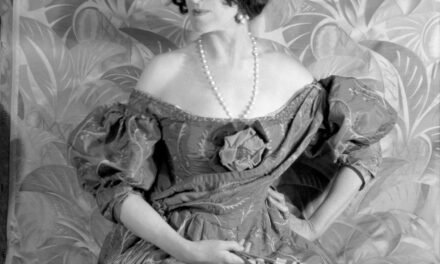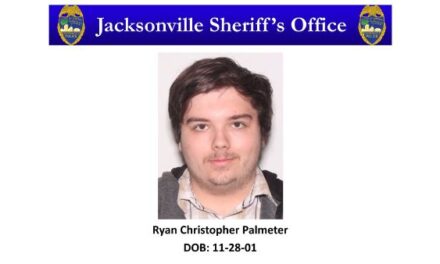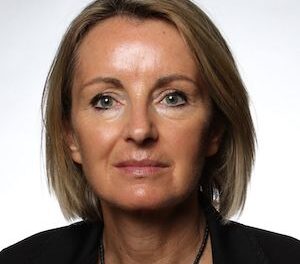Jadie David’s entry into the movie business sounds like a scene from a film. It was 1971; she was 22 years old, living in Burbank, Los Angeles. She would regularly ride her horse in nearby Griffith Park. She knew most of the other riders out there, including an African American man named Bob Minor. “Bob used to ride up next to me and go: ‘Hi, how you doing?’” says David. “But I was like, ‘This guy’s flirting with me.’ I really didn’t pay much attention to him.” Minor told her he was in the movie industry and that he liked her look, and asked for her phone number. “So, I’m like, ‘This is Hollywood. Who knows what could happen?’”
Two weeks later, Minor called her. “He said: ‘I have this movie for you to do,’” David says. “‘We’re going to fly you to Arizona first class, we’re going to put you in a first-class hotel, you’re going to make …’ I forget what it was, but it was a lot of money back then.” Minor was a stunt performer. He was going to Arizona to work on a western, doubling for the actor Fred Williamson; they also needed a double for his co-star, Denise Nicholas, for scenes involving horse riding and “water work” – swimming and diving in rivers. David was tall, like Nicholas. At the time, she was studying to become a nurse; by comparison, this sounded like a holiday.
“I said: ‘You’re going to pay me to ride a horse and play in the water?’ And he said: ‘That’s exactly what I’m going to pay you to do.’ So that’s how I got started.”
It was the beginning of an eventful career for David, now 72, as Hollywood’s first full-time Black stuntwoman, and a trailblazer for equality and safety within the industry. It was no holiday, though; being a stunt performer is a risky profession, and David has plenty of war stories to share.

When she entered the industry, the stunt community was tiny, “maybe 100 men and 20 to 25 women”, she says, and only a couple of part-time Black stuntwomen. When a stunt double was required for a Black female actor, it was not uncommon for a Black stuntman to don a wig and women’s clothing. Even worse, white stuntwomen would sometimes be “painted down” to double as Black women: their faces and skin were painted to appear darker, in what was effectively a form of blackface.
“That just irritated me,” says David. “I fought a lot for fair representation for women and people of colour. I fought side by side with white women and Black men.” And yet these two groups were getting work that should have been going to Black women. “It still happens,” she says.
Fortunately for David, the industry was changing just at the time she was entering it. The Blaxploitation era was getting into its stride, and despite its inequalities (the clue is in the name), the genre was creating new opportunities for Black people in film. As a sign of the times, that first western David worked on was titled The Soul of Nigger Charley. “I actually thought about not doing the movie based on the name,” she says. But within a year she was kicking ass and dodging speeding cars as a double for the Blaxploitation queen Pam Grier. She went on to work on movies such as The Blues Brothers, Lethal Weapon 3, Sudden Impact and the Naked Gun series.
Her career “completely came out of nowhere”, David says. At the time she was “discovered” in Griffith Park, she knew little about the movies and had no ambitions to get into the industry. As a child, she was quite physical – as well as riding she enjoyed dancing and ice-skating – but did not particularly have an appetite for danger. The fact that she owned her own horse speaks to a fairly comfortable upbringing but her family history is complicated, she explains, on a video call from LA. Her mother, who had also been a nurse, had separated from her biological father. In 1953, when Jadie was three, she remarried a Jewish car dealer – “he did quite well, which is why we kept horses” – at a time when interracial marriage was still illegal in several states. They had two more children. David says her brother could pass for white, while her sister has darker skin. “So our family looked like this: a white man, a Black woman, a Black kid, a white kid and a kid who we didn’t even know what she was.”
Within six months of David’s trip to Arizona, the phone rang again, asking her to double for Teresa Graves in a cop show called Get Christy Love! – which can claim to be the first hour-long series on US television led by a Black woman. Unfortunately, Graves left acting soon after, but David didn’t have to wait long for her next job: she became Grier’s stunt double on her breakthrough movies Coffy and Foxy Brown – on which Bob Minor was the stunt coordinator.
It was the beginning of a long relationship; David doubled for Grier on two more movies, and the two remain good friends. “She was really glad to have somebody because she didn’t really have a double,” says David. “She was doing a lot of stuff that she shouldn’t have been doing.” Doubling for her did require certain adjustments, though: “I don’t have big boobs,” David laughs. Much padding was required – “Everything was trying to build me up to look like Pam.”

Those movies have not aged well in some respects, it could be said, with their heavy-handed mix of sex, violence, race politics and loud street fashions. But despite the low budgets and overwhelmingly white, male crews, the atmosphere on set was always professional and comfortable, David says. And everybody loved Grier: “She was easy to work with. She was considered one of the most beautiful women in the world, but she didn’t have a huge ego. She was a nice person.”
In the early days, a lot of David’s stunt work was not all that demanding, she admits: “Say that you’re in a scene where a car comes through a wall into a restaurant where you’re sitting and you may have to dive out of the way [which is exactly what she did in The Blues Brothers]. Well, you just have to have timing to be able to not get run over; it doesn’t take a whole lot of experience in anything.”
This kind of work paid scale, as set by the unions, but performers would be paid considerably more for what David calls the “money stunts” – higher-risk stunts such as high falls or car stunts. This was another source of inequality in the industry, she says. “It was my experience and my understanding that with a lot of the ‘money stunts’, a white guy or a Black guy or a white woman wanted to make the money.” This lucrative work was often apportioned at the stunt coordinator’s discretion, which usually meant rewarding their friends. As a Black woman, David was last in the queue. She also lacked the experience to do those high-risk stunts, and stood no chance of gaining it. It was a catch-22 situation, she says: “if you can’t get the job, you can’t get the experience. That’s the same in any industry.”
The stunt community was generally close-knit and collegiate, and she never experienced any racism within it. People were happy to teach her new skills. At one point, a stuntman named Bob Yerkes, who worked on a reality show called Circus of the Stars, had a permanent training setup in his back yard, says David. “And we would practise high falls because he had a platform and airbags.” She also picked up skills including driving, riding, scuba diving and fire burns. “There’s a certain amount of learning on the job,” she says, casually mentioning the time she learned to jump a motorbike through a window. She is proud of the two fire burns she did, even if she nearly suffocated during her second one (in the cult movie Remote Control) when a breathing tube came loose under her fireproof mask. David kept a cool head: “I know people would say that being set on fire was really scary, but I did not have any fear.”
She did have a few closer brushes with death, though. For the 1977 thriller Rollercoaster, she had to leap off a mocked-up roller carriage along with other “passengers”. She was supposed to land on soft sand, “but what I think happened is that moisture came in overnight and packed the sand down, so it made it harder”. David broke her back and the stuntman next to her split his pelvis. “That was just darned stupid. That was just something that I should have turned down, but I was just being hard-headed,” she says. “But it wasn’t as bad as my second accident.”
This one was supposed to be “just a simple 30-foot-high fall”, for a TV gameshow, “but I hit the airbag wrong. What ended up happening was my T12 vertebra [halfway down her spine] shattered completely. It just exploded … the doctors thought I wasn’t going to walk again.” After nine hours of reconstructive surgery, she was put in a special plaster cast that encased her upper body from the top of her neck to her hips – “I lived in that for a year. I couldn’t really bathe properly.”

Another time, in the early 80s, a stuntman named Jack Tyree died in front of her on a film set, when he failed to hit an airbag after a clifftop jump. David was one of the people holding the bag. On that day, her son and stepson happened to be visiting the set. “My son was so upset; he didn’t want me to do high falls any more. He saw the guy get killed, then he saw me coming from behind the airbag with blood on me.”
The incident affected her emotionally, she says, as did events in her private life. Her ex-husband died in a car accident. She married and divorced for a second time, and her second husband was later murdered. Then her third husband, whom she married and divorced some time later, collapsed and died in his apartment. She doesn’t want to go into the details. “I figure I’m a Black widow,” she says, laughing. “You gotta watch out for me. Whatever you do, don’t marry me.”
David did not fully quit the stunt business until the 1990s. A job came up at Paramount pictures as an on-set safety coordinator, visiting movie sets, advising on how stunts could be performed safely and ensuring everything was in accordance with safety regulations. A couple of years later, she moved to a similar role for the Screen Actors Guild (SAG), where she established a dedicated stunt and safety department. She also co-founded the Alliance of Stunt Performers of Color and was responsible for creating the first Stunt Performers of Color Directory for SAG.
But activism was nothing new to David; she had been an equal rights campaigner throughout her active stunt career. Way back in 1973, just two years after her first job, she teamed up with the Black stuntman Marvin Walters to found the Coalition of Black Stunt Men and Women. (Walters had founded a Black men-only coalition in 1967.) Despite their opposition, “paint downs” were still endemic in the 1980s. “I got a hair up my butt, and I called the Equal Employment Opportunity Commission (EEOC), which is the federal agency that deals with discrimination,” says David. In the early 80s, they filed 22 charges of discrimination against the motion picture industry, with the help of an EEOC lawyer named Marjorie Ryan. “She was this little young lawyer,” says David.
“And the studios had big money. One [Hollywood] lawyer told her, ‘You don’t have to worry about us shooting you in the back; we’re going to shoot you right between the eyes.’”
In an ironic twist, Ryan’s boss at the EEOC was Clarence Thomas, the future supreme court justice, who recently voted to end affirmative action policies. “People would be amazed that, actually, he cared about affirmative action back then,” says David. “I remember reading that Clarence Thomas took advantage of affirmative action himself when he went to college, and so his views now are just stunning. It’s just amazing that he has turned into the person he’s turned into.”
The lawsuit was successful. The studios were forced to pay damages to stunt performers and to adopt anti-discrimination rules. “Those rules are still in place to this day,” says David, “but nobody’s enforcing them.” In 2014, David blew the whistle on plans to paint down a white woman to double for a Black actor on the Warner Bros TV show Gotham. As a result, the studio apologised and backtracked, hiring a Black stuntwoman. In 2017, it happened again: the Black actor Anjelika Washington posted a picture of herself on set with a white, painted-down stunt double.
“It’s like our politics in this country right now,” says David. “We have political leaders that are fighting against the rights of people of colour and women. And that group of people, I don’t agree with them, but I kind of understand, because nobody wants to give up a position of power. And I think that’s what happened with the stunt community; there were a group of people who were powerful, and they didn’t want people to get in their way. Again, it wasn’t that they were actually malicious; they just didn’t want to give up their position.”

Today, David lives a relatively peaceful life in San Fernando with her dog (our conversation is routinely interrupted by her admonishments to him: “Jack, stop that! Cut it out!”). Her son is now in his 50s and a musician, while she volunteers helping people with learning disabilities. Does she miss her former life? “I miss aspects of it. I miss the fun I had, because a lot of my career I had fun. I really did. Sometimes stunt people bond in weird ways, because you have to really trust people. So I miss that bonding. But there was a bunch of crap going on; I’m not sad about leaving that behind – all that stuff like the paint downs and the fighting. Not me fighting for something, but people fighting against me – that I don’t miss.”
She can take some satisfaction in the knowledge that it is common to see women and people of colour on movie sets today, in all roles. In some part, that is thanks to the battles she fought. For someone who says she never sought danger, David has encountered more than her fair share of it, on set and off it. “That’s just the kind of person I am,” she says. “Someone that tries to right wrongs.”




